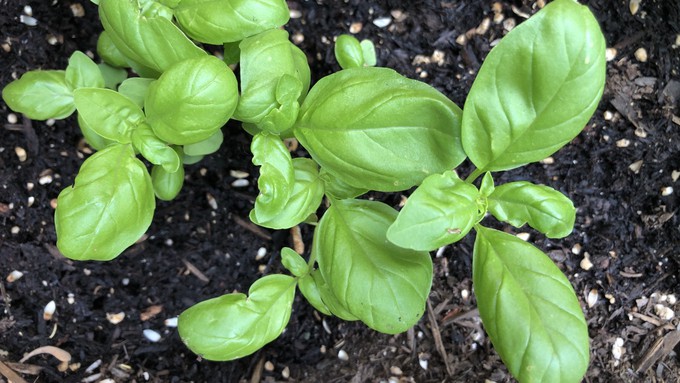
El Dorado County master gardeners spotlight these flavorful plants from garden to gourmet

Basil is likely the most popular annual herb to grow in a kitchen garden, but many other herbs are perennials. Learn about culinary herbs at an El Dorado master gardener class this weekend. Kathy Morrison
Learn how to make the most of these plants and grow your own in “Culinary Herbs: From Garden to Gourmet,” a free workshop presented by the UCCE master gardeners of El Dorado County.
Set for 9 a.m. Saturday, March 23, this three-hour class will be held at Blackstone Community Center in El Dorado Hills. It’s open to anyone (not just El Dorado County residents) and will inspire participants in the kitchen as well as the garden.
“No fat, low fat, no salt, watch the sugar; we’re constantly bombarded about how to eat healthier,” say the master gardeners. “One of the best ways to introduce healthy, delicious flavor into meals is to use herbs in our cooking. Many are easy to grow and preserve. They also make beautiful landscape plants and many of their flowers are edible.
“Join master gardeners Jan Keahey and Ada Brehmer to explore the herbs that grow well in our area, how to propagate and grow, when to harvest and how to preserve,” they add. “And you will be able to propagate herbs to take home with you.”
Blackstone Community Center is located at 1461 Blackstone Parkway, El Dorado Hills. Questions? Email mgeldorado@ucanr.edu.
For more on El Dorado master gardener programs: https://mgeldorado.ucanr.edu/.
Comments
0 comments have been posted.Sacramento Digs Gardening to your inbox.
Sites We Like
Garden Checklist for week of July 21
Your garden needs you!
* Keep your vegetable garden watered, mulched and weeded. Water before 8 a.m. to reduce the chance of fungal infection and to conserve moisture.
* Feed vegetable plants bone meal, rock phosphate or other fertilizers high in phosphate to stimulate more blooms and fruiting. (But wait until daily high temperatures drop out of the 100s.)
* Don’t let tomatoes wilt or dry out completely. Give tomatoes a deep watering two to three times a week.
* Harvest vegetables promptly to encourage plants to produce more. Squash especially tends to grow rapidly in hot weather. Keep an eye on zucchini.
* Pinch back chrysanthemums for bushy plants and more flowers in September.
* Remove spent flowers from roses, daylilies and other bloomers as they finish flowering.
* Pinch off blooms from basil so the plant will grow more leaves.
* Cut back lavender after flowering to promote a second bloom.
* It's not too late to add a splash of color. Plant petunias, snapdragons, zinnias and marigolds.
* From seed, plant corn, pumpkins, radishes, winter squash and sunflowers.